[FEATURE] Hard knock lives of Koreans born to U.S. soldiers
By Claire LeePublished : April 27, 2016 - 16:50
More than 50 years after her American solider father left South Korea, Jang Yeon-hee still longs to meet the parent who she has never known.
“Whenever I take the subway I see a lot of foreign tourists en route to Incheon International Airport,” Jang said in an interview with The Korea Herald.
“When I see such visitors I’d break down in tears. There are so many people coming in and out of this country, and yet the person who gave me my life left before I was even born and never bothered to visit again to see me.”
“Whenever I take the subway I see a lot of foreign tourists en route to Incheon International Airport,” Jang said in an interview with The Korea Herald.
“When I see such visitors I’d break down in tears. There are so many people coming in and out of this country, and yet the person who gave me my life left before I was even born and never bothered to visit again to see me.”
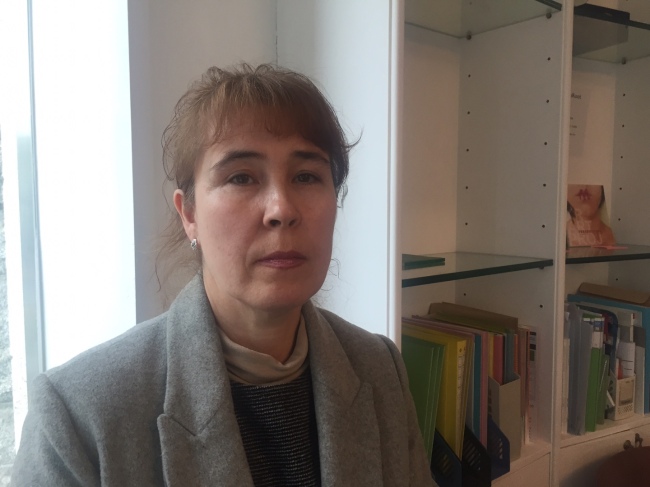
Now 51, Jang last week took a DNA test at KoRoot, a Seoul-based adoptee advocacy organization, in hopes of finding her American father. The father left her Korean mother when she was pregnant with Jang in 1964.
Jang is one of some 40,000 mixed-race Koreans born in South Korea from 1955-1969, many of whom were born to American soldiers who were temporarily stationed here. Many of the Korean women who gave birth to such mixed-race children were those who were trafficked by Korean brokers to work as prostitutes for the U.S. military.
Many fathers simply went back to the U.S. and never returned. Mothers relinquished their children, as many of them had no financial means to raise them, while suffering from severe social stigmatization for being sex workers. Most of the children were adopted into American families. For those who remained in Korea, like Jang, life was filled with a sense of alienation, racist attacks and longing for their birth parents.
Jang’s DNA test kit was donated by Thomas Park Clement, a mixed-race adoptee, and brought to Korea by 325Kamra, a non-profit group comprised mainly of mixed-race Korean adoptees in the U.S. Many of the group‘s members were born in Korea to American soldier fathers and Korean mothers throughout the 1950s and 60s.
The free DNA testing was launched to help all Korean adoptees learn more about their Korean heritage. They also help those with positive DNA matches to potentially reunite. Katherine Kim Bradtke, one of the representatives of 325Kamra, said as a mixed-race adoptee she feels deeply for Jang, and hopes that her DNA will be able to give her answers.
“She has a heartbreaking story, but it is likely the story that many of us mixed-race adoptees had,” Bradtke said.
Jang is one of some 40,000 mixed-race Koreans born in South Korea from 1955-1969, many of whom were born to American soldiers who were temporarily stationed here. Many of the Korean women who gave birth to such mixed-race children were those who were trafficked by Korean brokers to work as prostitutes for the U.S. military.
Many fathers simply went back to the U.S. and never returned. Mothers relinquished their children, as many of them had no financial means to raise them, while suffering from severe social stigmatization for being sex workers. Most of the children were adopted into American families. For those who remained in Korea, like Jang, life was filled with a sense of alienation, racist attacks and longing for their birth parents.
Jang’s DNA test kit was donated by Thomas Park Clement, a mixed-race adoptee, and brought to Korea by 325Kamra, a non-profit group comprised mainly of mixed-race Korean adoptees in the U.S. Many of the group‘s members were born in Korea to American soldier fathers and Korean mothers throughout the 1950s and 60s.
The free DNA testing was launched to help all Korean adoptees learn more about their Korean heritage. They also help those with positive DNA matches to potentially reunite. Katherine Kim Bradtke, one of the representatives of 325Kamra, said as a mixed-race adoptee she feels deeply for Jang, and hopes that her DNA will be able to give her answers.
“She has a heartbreaking story, but it is likely the story that many of us mixed-race adoptees had,” Bradtke said.
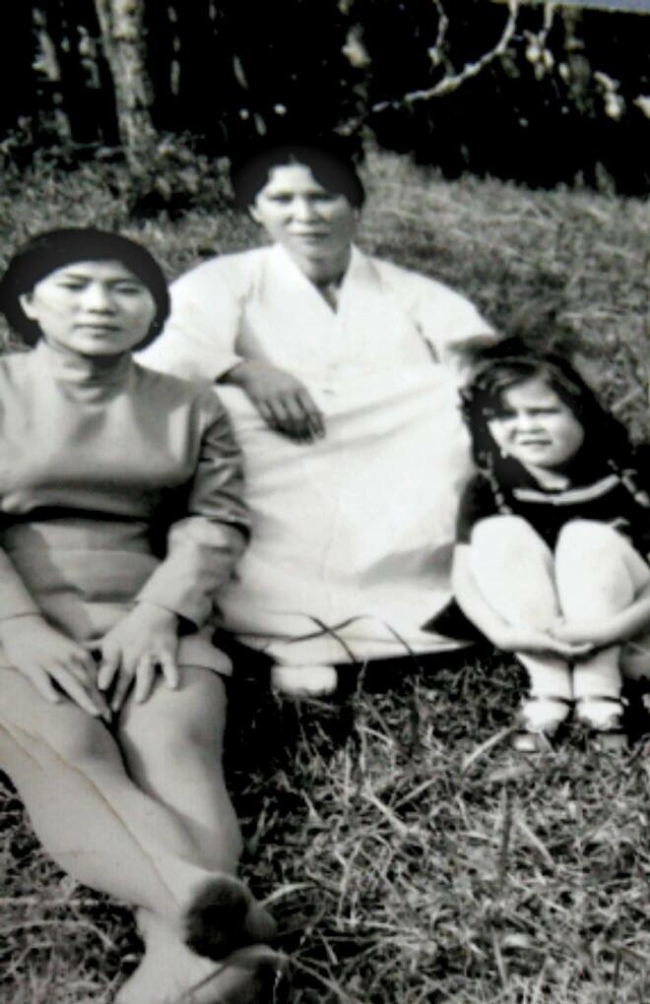
‘All I know is either his middle or last name is McDonald’
Jang was born in 1964 in Pyeongtaek, Gyeonggi Province, near Camp Humphreys, a U.S. garrison in the region. Her mother, named Jang Boon-soon (born 1938), was from a poor family in Geojedo Island, South Gyeongsang Province. She was brought to the base by an elderly woman in her hometown, at age 18.
Before leaving Geojedo, Jang’s mother was told by the woman that she would be doing laundry. She was 26 when Jang was born. The father, an American soldier who was stationed in Korea at the time, returned to the U.S. before she was born and never spoke to her mother again.
All Jang knows about her father is that either his last or middle name is McDonald or MacDonald.
Jang’s mother lived a lonely and impoverished life until her death 18 years ago. She drank heavily throughout her life, was never married and spent her last years in Seonghwan, a small town in South Chungcheong Province where she knew nobody. Jang never met her grandparents.
“My mother purposely moved to a town where nobody would recognize her,” Jang said. “She suffered too much in Pyeongtaek. Her life was just filled with sadness.”
Jang had to financially support her family by working at different factories right after graduating from elementary school. She also worked as a housemaid for several households. Jang was told by her mother’s friends that her father was aware of her mother’s pregnancy, but returned to the U.S. nonetheless. Her mother rarely spoke of him, even when Jang asked her questions. “I think it was just too painful for her to talk about him,” she said.
Both Jang and her half-brother -- he was born from their mother’s relationship with another American soldier -- financially struggled throughout their lives. They were often discriminated for being mixed-race in South Korea. Jang was often bullied in school for her appearance. Her brother dropped out of middle school and worked as a factory laborer. “Even my own husband once told me during a fight, that I come from the lowliest roots,” she said. “I still hear racist slurs like twigi (a derogatory Korean term for mixed-race people).”
Jang became a Christian when she was 25. The reason was simple. “Finally, I had someone to call as my father,” she said.
‘One nation, one people’
While interracial marriage was legally banned in parts of the U.S until 1967, the very first children from Korea who were sent overseas for international adoption in 1954 were mixed-race children born to American soldiers and Korean women.
According to the National Human Rights Commission of Korea’s 2003 report on mixed-race Koreans, South Korea’s ministries of justice, welfare and foreign affairs collaborated with private adoption agencies to send mixed-race children to the U.S. and other countries in the 1950s.
“It was one of then-President Syngman Rhee’s ‘one nation, one people (ilguk, ilmin)’ policies, which emphasized on ethnic homogeneity,” said pastor Kim Do-hyun, a director of KoRoot.
“The Korean government systematically sent out mixed-race children overseas. One cannot say which may have been better for them in the 1950s – living in poverty and discrimination in Korea or being raised by someone else in the U.S. But one thing that is clear is that the Korean government got rid of the children instead of taking it as an opportunity to fight racism.”
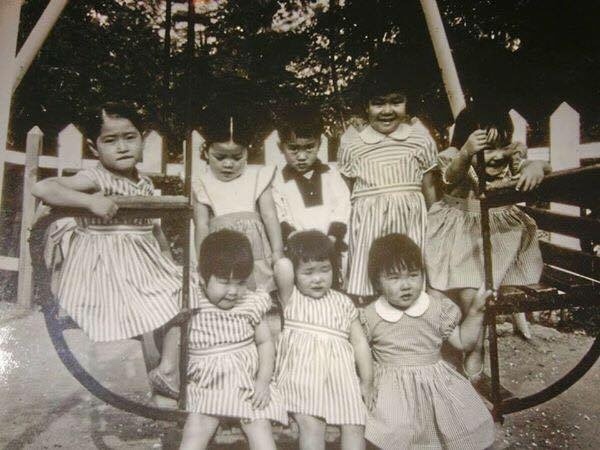
Bradtke, who was born in 1957 in Bupyeong district of Incheon, stayed at an orphanage until she was sent to the U.S. for adoption in 1961. She was recently reunited with relatives of her late birth father, an American GI, through DNA testing. “It wasn’t until I read Bertha Holt’s book, ‘Bring my Sons from Afar,’ in which my orphanage was referenced, that I learned that the place was built by World Vision with the intention of housing mixed-race kids who were to be sent to the West for adoption,” she said.
According to the NHRCK report, a large number of mixed-race Korean children and adults moved to the U.S. as adoptees and immigrants in the early 1980s, after the U.S. congress in 1982 approved its “Amerasian Immigration Act,” which prioritized U.S. immigration to children born in 1950-1982 and fathered by U.S. soldiers in Asian countries, including South Korea and Vietnam.
In order to “encourage” mixed-race Korean men to leave the country, the South Korean government in the 1970s started running job training programs specifically for them. The classes offered tips on how to get employed overseas. In 1972, the government even introduced a special law that exempted them from serving mandatory military service -- which is required for all able-bodied male South Korean nationals – so that they would leave the country at an earlier age, according to experts. The law was in fact in effect until 2010.
In 1982, 95 percent of surveyed mixed-race Koreans in Korea said they wished to move to the U.S., according to the report. Some children even volunteered to be adopted by U.S. parents even if it meant being separated from their birth mothers. The main reason was social alienation and racism.
Life as a half-black Korean
Like Jang, Kang Hwa-sim has never known her father. Born in 1951 to a Korean mother and African-American soldier father in Uijeongbu, Gyeonggi Province, she was constantly bullied and physically attacked for her appearance for the first 19 years of her life in Korea.
Her mother was attending a nursing school in Hamgyeong Province in today’s North Korea before she was brought to the region by South Korean soldiers a year before the Korean War.
She started living with Kang’s father, after suffering a scam marriage to a Korean who turned out to be a married man with children.
Not long after, however, Kang’s father drove a truck carrying explosives to the demilitarized zone and never came back. Her mother was pregnant with Kang at the time.
According to the NHRCK report, a large number of mixed-race Korean children and adults moved to the U.S. as adoptees and immigrants in the early 1980s, after the U.S. congress in 1982 approved its “Amerasian Immigration Act,” which prioritized U.S. immigration to children born in 1950-1982 and fathered by U.S. soldiers in Asian countries, including South Korea and Vietnam.
In order to “encourage” mixed-race Korean men to leave the country, the South Korean government in the 1970s started running job training programs specifically for them. The classes offered tips on how to get employed overseas. In 1972, the government even introduced a special law that exempted them from serving mandatory military service -- which is required for all able-bodied male South Korean nationals – so that they would leave the country at an earlier age, according to experts. The law was in fact in effect until 2010.
In 1982, 95 percent of surveyed mixed-race Koreans in Korea said they wished to move to the U.S., according to the report. Some children even volunteered to be adopted by U.S. parents even if it meant being separated from their birth mothers. The main reason was social alienation and racism.
Life as a half-black Korean
Like Jang, Kang Hwa-sim has never known her father. Born in 1951 to a Korean mother and African-American soldier father in Uijeongbu, Gyeonggi Province, she was constantly bullied and physically attacked for her appearance for the first 19 years of her life in Korea.
Her mother was attending a nursing school in Hamgyeong Province in today’s North Korea before she was brought to the region by South Korean soldiers a year before the Korean War.
She started living with Kang’s father, after suffering a scam marriage to a Korean who turned out to be a married man with children.
Not long after, however, Kang’s father drove a truck carrying explosives to the demilitarized zone and never came back. Her mother was pregnant with Kang at the time.
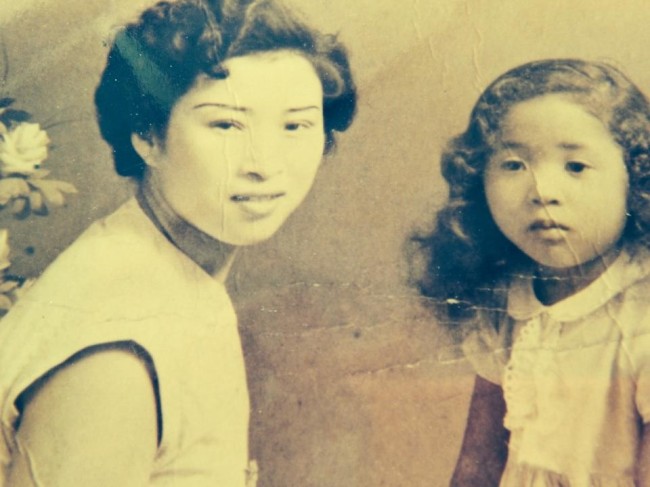
To this day, Kang doesn’t know if her father died that day or simply decided to leave her mother for good. All she knows is his last name is Echo. After her father went missing, Kang’s mother had a number of live-in relationships with American soldiers, who supported her financially.
Her mother soon started working as a dancer for the U.S. military, moving from one base to another. Kang lived in almost every Korean city that had active U.S. military bases, including Dongducheon, Osan, Paju, Pyeongtaek and Uijeongbu. During these years, Kang witnessed many teenage girls being trafficked or forced to work as prostitutes by Korean pimps and brokers.
“Those brokers should still be tracked down now and jailed. … It’s not too late,” she said.
Her mother had two more children with two other American soldiers. She died in 1970 at the age of 37, after suffering from another marriage scam.
That year, Kang decided to leave Korea for good. She married an African-American GI and moved to the U.S. with him. “I’d had enough. I was so done with that country,” said Kang, who now lives with her husband in Killeen, Texas.
Like Jang, Kang also left her middle school after suffering constant abuse. “There wasn’t a single day when I was not attacked either verbally or physically,” she said.
“Kids would spit on my face. They’d hit me for no reason and call me a nigger. Even my mother was told by her acquaintance that she should just throw me into the river when I was born, because I was half black. I heard there were many half-black babies that were just relinquished in the mountain or the river shortly after they were born.”
Katherine Kim Bradtke said both Jang and Kang’s stories echo other painful stories of mixed-race Korean adoptees. Among many cases, Bradtke knows adoptees whose Korean mothers gave up their children so they could marry Korean men. She said these mixed-race individuals involved in rampant cases of unruly relationships, failed marriages, abandonments and adoptions -- they could all be someone’s half-sibling.
“This is entirely plausible. … If my mother or someone else’s mother remained in Korea and remained in the ‘industry,’ it is very likely that they may have had more children. So who is to say that Jang isn’t an adoptee’s half-sister?” she said.
Bradtke is also still searching for her Korean mother. All she knows is that her name is Kim Chang-soo, although it may not be her real name as many adoption documents have been fabricated by agencies here since the 1950s.
‘A life-long wish’
Jang is also looking for her younger half brother’s biological father, another U.S. soldier who returned to the U.S. while her mother was pregnant with his son in 1974. Her half-brother, whose blood type is RH B+, was born the following year.
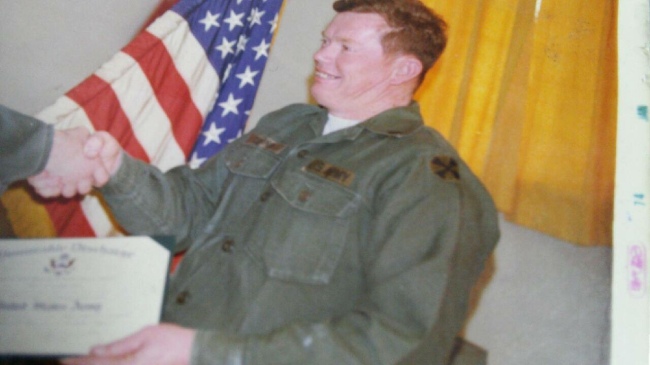
Jang has more information and memories about her brother’s American parent than about her own father. She said his name is Jerry Thomas Collins, and he served three years at Camp Humphreys in the early 1970s. During his stay here, he had a live-in relationship with Jang’s mother for about 2 years, she said.
“I remember he enjoyed painting,” Jang said, recalling her days living with Collins and her mother. “He had an oil painting easel at home. On his last day with us, my mother and I said ‘bye’ to him at Pyeongtaek Bus Terminal.”
Jang said her mother had sent him a photograph of her half-brother taken on his 100th day birthday. He also wired funds from the U.S. for about a year, and eventually sent an invitation for Jang and her mother to live with him in the U.S. For whatever reason, her mother decided not to go. They lost touch since then.
“It’s been our life-long wish to meet our fathers,” Jang said. “It’s a universal desire to know one’s roots. I hope my father understands that.”
Jang still has an address which is assumed to be Collin’s parents’ in the ’70s. It is: 1539 W 228th street. Torrance, CA. 90501.
By Claire Lee (dyc@heraldcorp.com)
“I remember he enjoyed painting,” Jang said, recalling her days living with Collins and her mother. “He had an oil painting easel at home. On his last day with us, my mother and I said ‘bye’ to him at Pyeongtaek Bus Terminal.”
Jang said her mother had sent him a photograph of her half-brother taken on his 100th day birthday. He also wired funds from the U.S. for about a year, and eventually sent an invitation for Jang and her mother to live with him in the U.S. For whatever reason, her mother decided not to go. They lost touch since then.
“It’s been our life-long wish to meet our fathers,” Jang said. “It’s a universal desire to know one’s roots. I hope my father understands that.”
Jang still has an address which is assumed to be Collin’s parents’ in the ’70s. It is: 1539 W 228th street. Torrance, CA. 90501.
By Claire Lee (dyc@heraldcorp.com)







![[KH Explains] How should Korea adjust its trade defenses against Chinese EVs?](http://res.heraldm.com/phpwas/restmb_idxmake.php?idx=644&simg=/content/image/2024/04/15/20240415050562_0.jpg&u=20240415144419)










![[Today’s K-pop] Stray Kids to return soon: report](http://res.heraldm.com/phpwas/restmb_idxmake.php?idx=642&simg=/content/image/2024/04/16/20240416050713_0.jpg&u=)